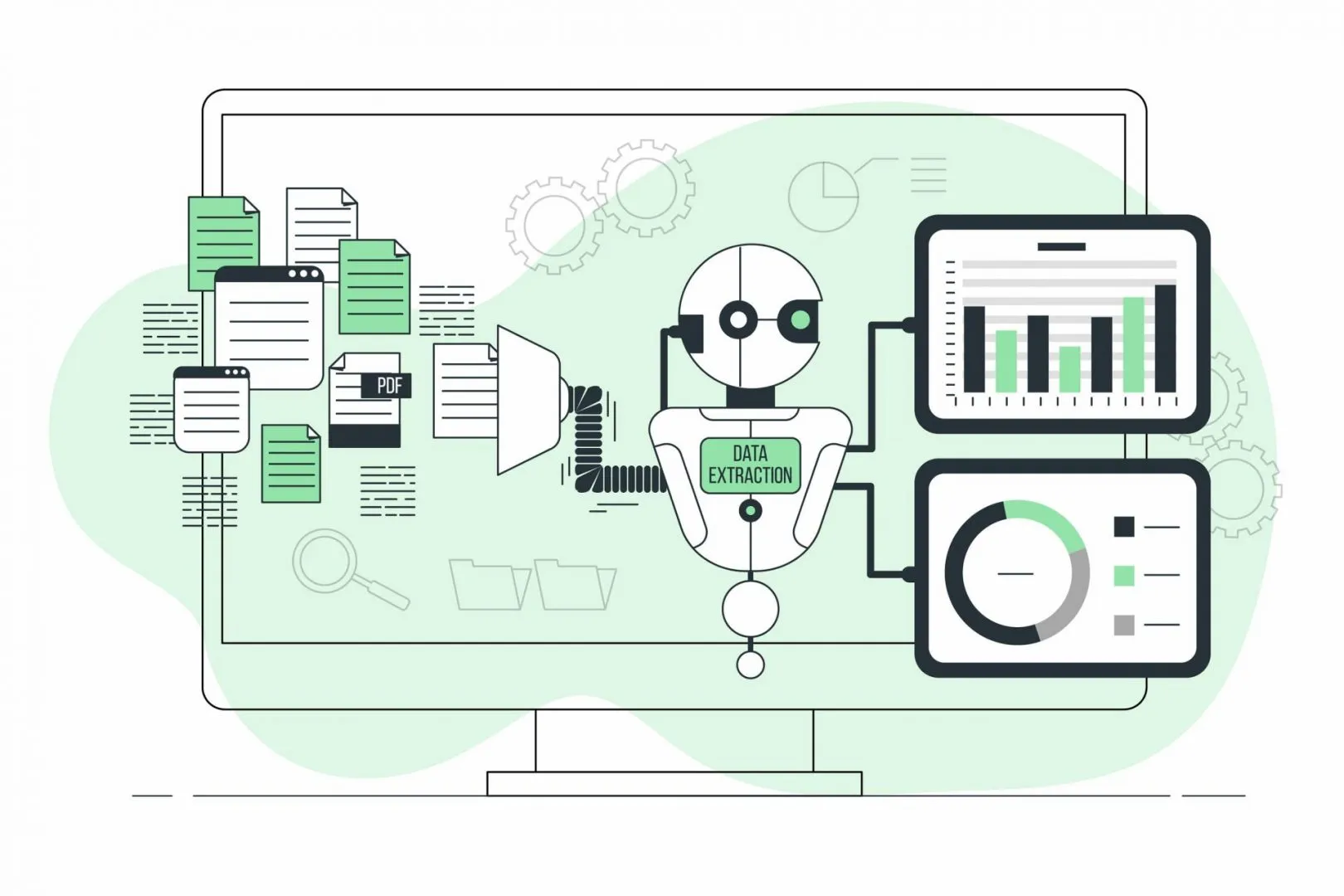Machine data analytics refers to the process of collecting, storing, and analyzing massive amounts of data generated by machines, such as sensors, industrial equipment, and automation systems. This includes data from personal computers, smartphones, and other domains like servers, networks, websites, applications, programs, SIEM logs, and Financial transaction records.
Machine data analytics is a form of big data analysis that uses performance data to extract insights. Therefore, One of the main benefits of machine data analytics is the ability to gain insights and make better-informed decisions based on real-time data.
A few examples of machine data analysis use cases are as follows:
- In manufacturing, machine data analytics can be used to optimize production processes, reduce downtime, and improve product quality.
- A security team may use analytics in real-time to identify threats by detecting irregularities in network access and allowing for instant rectification of the issue.
- In the energy sector, machine analytics can be used to optimize the performance of power plants and reduce energy consumption.
- Teams can use real-time customer data to spot trends and create new products that improve the overall customer experience. Customer interactions recorded via webpages and applications provide businesses with insights into consumers’ multi-touch actions across numerous channels.
Different Ways to analyze Machine Data
With so much data available to organizations today, businesses are utilizing data analytics methodologies of data analytics and machine learning algorithms to extract meaning from the massive volume of information and help them keep up. There are different approaches to analyzing data in the process of machine data analytics, including:
- Descriptive analytics: This involves analyzing machine data to understand what has happened in the past. This type of analysis can be used to identify trends, patterns, and anomalies in the data.
- Predictive analytics: This involves using machine data to make predictions about future events. For example, predictive analytics can be used to predict when a piece of equipment is likely to fail, allowing for proactive maintenance to be scheduled.
- Prescriptive analytics: This involves using machine data to not only make predictions about the future but also to recommend specific actions to take in response to those predictions.
What are the common tools and solutions?
There are several tools and technologies that are commonly used in machine data analytics, including:
- Data lakes: A data lake is a central repository that allows businesses to store all their structured and unstructured data at any scale. Data lakes are often used to store machine data, as they can handle large amounts of data and support real-time processing.
- NoSQL databases: NoSQL databases are designed to handle large amounts of unstructured data and support real-time processing. They are often used to store machine data, as they can handle the high volume and variety of data generated by machines.
- Stream processing frameworks: Stream processing frameworks are used to process large amounts of data in real-time. They are often used in machine analytics to enable real-time decision-making based on data generated by machines.
The Significance of Machine Data Analytics
Machine data is critical as it can provide useful insights and information on how machines operate. This data might be utilized to optimize the operation of machinery, minimize downtime and maintenance expenditures, and make informed business decisions by providing insight into trends and patterns that indicate a need for repair or maintenance.
Additionally, Machine data may also be used to improve the design of new equipment as well as develop predictive maintenance techniques.
However, the significance of machine data has grown in recent years and it’s become more valuable than ever before.
Today’s organizations in a wide range of industries require ongoing insights into how their systems are performing. Therefore, it is crucial for businesses to consistently and successfully examine machine data. Thus, data cannot be synthesized and federated without machine data analytics.
Overall, machine data analytics is an imperative tool for businesses looking to optimize the performance of their machines and make better-informed decisions based on real-time data. Businesses can gain valuable insights into their operations and take proactive steps to improve efficiency and reduce costs by collecting and analyzing machine data.
The many uses of Machine Data Analytics
There are many practical uses for machine analytics, including:
- Predictive maintenance: Machine data can be used to identify patterns and trends that may indicate a need for maintenance or repair, allowing organizations to proactively address issues before they lead to downtime or failure.
- IT: Organizations can use analytics tools to examine error rates, downtime, and other statistics from massive amounts of log and machine data. Moreover, predictive algorithm-based log and machine data analytics services can easily be coupled with a range of DevOps tools to maintain and enhance performance.
- Quality control: Machine data can be used to monitor the performance of different parts of a machine and identify potential quality issues, allowing organizations to improve the overall quality of their products.
- Inventory management: Machine data can be used to track the usage and consumption of different parts, allowing organizations to optimize their inventory levels and reduce waste.
- Customer behavior analysis: Machine data can be used to analyze customer behavior and identify trends and patterns, allowing organizations to better understand their customers and tailor their products and services accordingly.
- Supply chain optimization: Machine data can be used to identify bottlenecks and inefficiencies in the supply chain, allowing organizations to make improvements and increase efficiency.
- Energy management: Machine data can be used to monitor energy usage and identify ways to reduce energy consumption and costs.
- Compliance: Machine data analytics make it quick and simple for enterprises to show that they keep all required activity records and regularly analyze data to comply with industry standards.
These are just a few examples of the numerous ways that machine analytics can be used to improve business operations and decision-making.
What about Machine learning?
A majority of people confuse Machine Data with Machine Learning. These terms may sound similar but there are some stark differences (and relations) between the two.
Machine learning refers to the use of algorithms and statistical models to automatically identify patterns and relationships in large datasets. These algorithms and models are trained on large datasets, and can then be used to make predictions or take actions based on the insights gained from the data. For example, a machine learning model might be trained on a dataset of customer data, and then be able to predict which customers are most likely to make a purchase based on their past behavior.
Another instance where the power of ML is being utilized by businesses is via Oracle Machine Learning, which allows you to tackle important business problems and expedite the creation and deployment of data science and machine learning-based solutions tailored to your business.
In a big data context, machine learning is often used to process and analyze large volumes of data in real-time, and to identify patterns and relationships that would be difficult or impossible for a human to discern.
If you wish to learn more about the differences between Machine data and machine learning, head over to this post on our blog page.
The Complications with Machine Data Analytics
There are several challenges that organizations face when dealing with machine data, including:
- Data quality: Ensuring the quality and accuracy of the data is a crucial aspect of machine analytics. Poor quality data can lead to incorrect insights and decisions.
- Data volume and complexity: Machine data can be generated at a very high volume and can be complex, making it difficult to manage and analyze.
- Data storage and processing: Storing and processing large volumes of machine data can be expensive and resource-intensive.
- Data security: Ensuring the security and privacy of machine data is important, as this data can contain sensitive information about the operation of machines and the performance of an organization.
- Lack of skilled personnel: There may be a lack of skilled personnel who are able to effectively analyze and interpret machine data, which can limit the usefulness of the data.
- Integration with other systems: Machine data analytics often requires integration with other systems and technologies, which can be a complex and time-consuming process.
Ultimately, using machine analytics effectively requires a solid understanding of the data, the ability to manage and analyze large and complex datasets, and the implementation of appropriate security and privacy measures.
apica.io’s machine data observability platform allows you to collect and analyze your logs in real-time. It offers industry-leading machine learning analyses as well as pre-built queries for several popular services and technologies allowing you to get insights quickly.
Get enhanced system visibility, faster problem resolution, productive collaboration, and greater analytics efficiency with Apica’s Active observability data fabric to supercharge your machine data analytics today.
In a Glimpse
- Machine data analytics is the process of collecting, storing, and analyzing massive amounts of data generated by machines.
- The main benefit of machine analytics is the ability to gain insights and make better-informed decisions based on real-time data.
- There are different approaches to analyzing machine data, including descriptive analytics, predictive analytics, and prescriptive analytics.
- There are several tools and technologies that are commonly used in machine data analytics, including data lakes, NoSQL databases, and stream processing frameworks.
- apica.io’s machine data observability platform allows you to collect and analyze your logs in real-time.






2 thoughts on “Machine Data Analytics: Elucidated”
Well written blog, very informative and easy to understand. We at TechMobius are one of the best data analytics and business intelligence services in UK. You can visit us for more information.
Thanks! @Tech Mobius